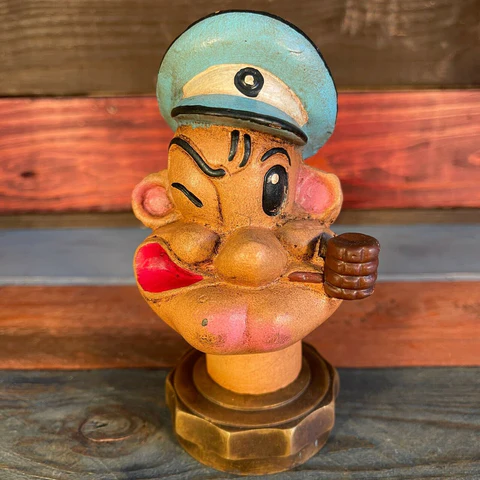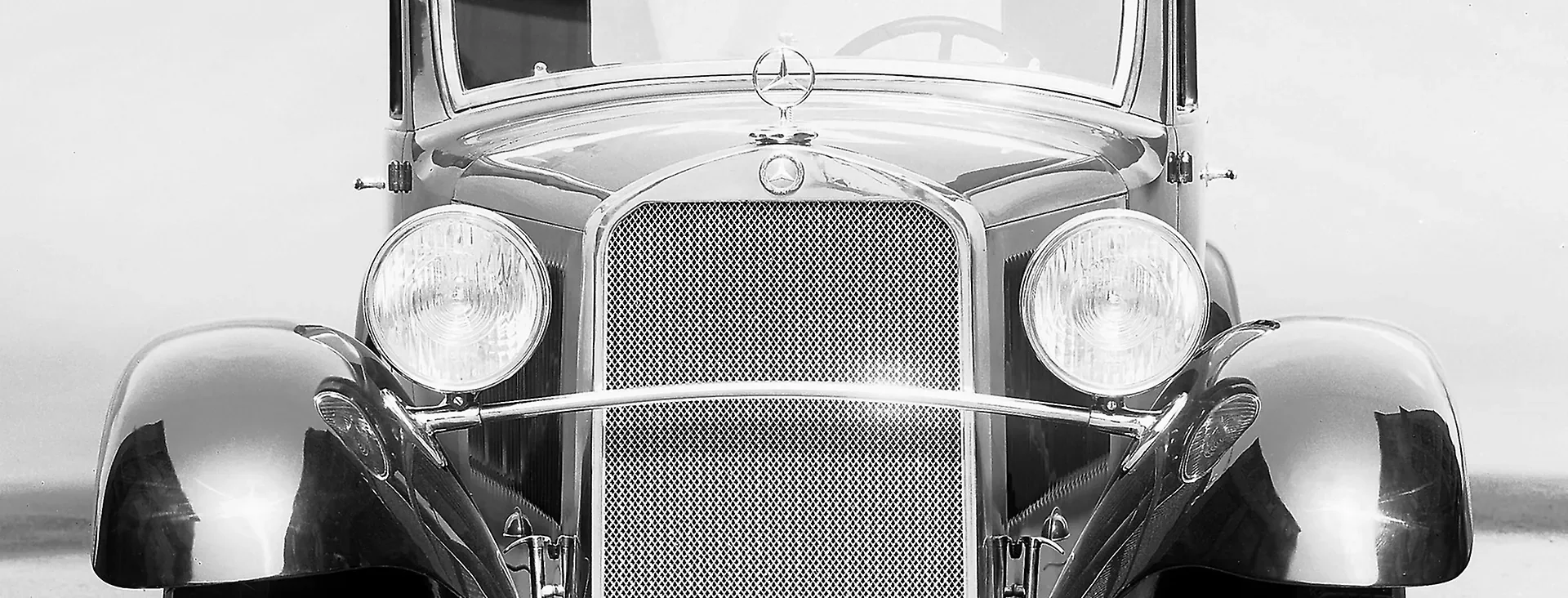About JC Whitney Editorial Team

Meet the JC Whitney Editorial Team, your go-to experts for automotive insights, from in-depth car culture articles to the latest in vehicle tech.
More from JC Whitney Editorial TeamYou almost never see hood ornaments on cars anymore, but there was a time when they were a mainstay of the automotive world. They were so common in fact, that there was an entire cottage industry of people making their own custom hood ornaments to support political candidates, represent favorite cartoon characters, or show off local culture.
The reason for the once-prominent hood ornament customization subculture is simple. Early automobiles had their radiators placed outside of the engine’s hood, meaning on the front of almost every early model car there was a radiator cap sitting in a centered, prominent position. Manufacturers found these caps unsightly, and so started to adorn them with their own symbols and logos, which they referred to at the time as car mascots. This was the genesis of some iconic logo displays, including the Mercedes Benz star.

The Spirit of Ecstasy
Another automaker that famously embraced the use of the radiator cap car mascot was Rolls-Royce. Even today you’ll see a statue reminiscent of classic Greek or Roman sculpture adorning the front of every Rolls-Royce car. The figure, called The Spirit of Ecstasy, is a signature feature of Rolls-Royce cars, symbolizing the brand’s commitment to luxury, elegance, and excellence. The statue was designed by sculptor Charles Sykes and depicts a woman leaning forward with her arms stretched back and her clothes flowing in the wind, representing the spirit of freedom and ecstasy.
Charles Sykes was a friend of Rolls-Royce founders Charles Rolls and Henry Royce and knew them personally, but the origin of the statue came from a French Nobleman who served as a patron of Sykes requesting a custom mascot for his own 1909 Rolls-Royce Silver Ghost. He did so by sculpting from a model named Eleanor Velasco Thornton, who happened to be the nobleman’s mistress.
Personal mascots were popular at this time, and what could be more luxurious for those with the means than to have a trained artist create a one-of-a-kind emblem to affix to the top of their radiator cap? At Rolls-Royce there was concern over the kinds of caps being created, however, and they began desiring an elegant, uniform cap that owners would be less inclined to replace. Being friends with Sykes, his patron, and Thornton, Rolls and Royce eventually provided Sykes with a brief for the creation of a new mascot. Initially, they wanted it to evoke the statue of Nike in The Louvre Museum, but Sykes ultimately found a way to combine this request with the unique sculpture he’d created for his patron, once again using Thorton as the model.
The rest is history. Ever since, The Spirit of Ecstasy has adorned Rolls-Royce automobiles. The statue has become an integral part of Rolls-Royce’s identity, reflecting the brand’s dedication to craftsmanship and attention to detail. It serves as a symbol of prestige and distinction, setting Rolls-Royce cars apart from other luxury vehicles. The presence of the Spirit of Ecstasy on all Rolls-Royce cars is a testament to the brand’s rich heritage and its commitment to maintaining its iconic status in the automotive world.
A Changing Landscape
Eventually, modern design standards changed, and the top of the radiator was enclosed under the hood, which made prominent radiator caps impractical, as they couldn’t fit beneath the hood when it was closed. But many car manufacturers, Mercedes and Rolls-Royce among them, had found a part of their brand identity on their logos or mascots protruding from the front end of their cars, and so for aesthetic reasons, the hood ornament we know today was born, with these ornaments merely attached to the top of the hood and no longer serving a practical purpose.

For automakers who did not favor the aesthetics of the hood ornament and did not strongly associate their brands with them, there was no longer a reason to keep producing these ‘car mascots,’ and as you’d expect, manufacturers of more practical, affordable cars began to do away with them early on. In addition, the hood ornaments reduced the aerodynamic profile of the car. As vehicles became faster and fuel efficiency became more of a concern, many automakers abandoned ornaments for this reason as well.
Then came another set of concerns with the ornaments. For one thing, they were a safety liability, particularly in cases where someone crashed into a pedestrian. The unyielding ornaments had a tendency in these cases to jab if not outright stab the person who’d been hit, worsening their injuries. Eventually, in the US it became a requirement for hood ornaments to bend when force was applied to them, and many makers used a spring-based design to meet this new requirement. But with mostly luxury brands being the only ones to still produce ornamented cars, they became status symbols which inspired people to steal them off the front of cars, sometimes wearing them as pieces of jewelry. To prevent this issue automakers began to use a retractable or detachable design so that the now-valuable ornaments could be kept safe when the car was unattended.
Thanks to the combination of all these factors, hood ornaments on actual cars have mostly gone the way of the dinosaur, but what looks like extinction could simply be a transition into a second act for these once-common decorative pieces.

New Life
Although car makers mostly shun hood ornaments these days, their predecessors, mascots attached to radiator caps, have now become collectible novelties, and there is a thriving market for antique pieces online. All across auction and collectible sites like eBay and Etsy you can find vintage radiator caps depicting Popeye, Felix the Cat, and all kinds of other designs. In some cases, as with the Henry Ford Museum in Dearborn, Michigan, you’ll find vintage radiator caps as part of their permanent collections. Their site features radiator cap mascots from long-gone luxury automobile manufacturers as well as ones that sport political slogans such as “Keep Coolidge,” and “Votes For Women.”
It’s rumored that a few copies of the unique statue that inspired the Rolls-Royce mascot may still survive. They would be valuable pieces of automotive history if so.
It should also be noted that just because the radiator cap is found under the hood these days doesn’t stop you from switching out your stock cap with a unique design. Aftermarket radiator caps with custom designs are still available for car enthusiasts looking to take part in one of the earliest trends in car modification.
